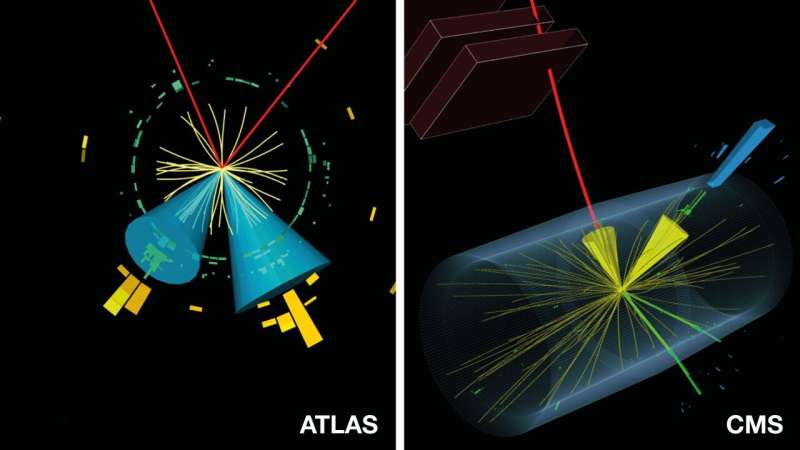The ATLAS and CMS teams at the Large Hadron Collider (LHC) have been hard at work attempting to uncover the mysteries of the Higgs boson since its discovery a decade ago. The teams, in particular, have been looking at how the Higgs boson interacts with basic particles like quarks and leptons, which make up matter. According to the Standard Model of particle physics, these matter particles are classified into three “generations” based on their mass, and the Higgs boson interacts with them with a strength proportionate to their mass. Any divergence from this pattern would be a clear indicator of the emergence of new phenomena.
ATLAS and CMS have previously seen interactions of the Higgs boson with the heaviest quarks and leptons of the third generation, which accord with the Standard Model predictions within the present measurement precision. They have also found the first evidence that the Higgs boson interacts with a muon, a second generation lepton. They haven’t seen it interact with second-generation quarks yet. ATLAS and CMS describe results that impose strict limitations on the intensity of the Higgs boson interaction with a charm quark, a second-generation quark, in two recent papers.
ATLAS and CMS investigated Higgs boson interactions by examining how the boson converts, or “decays,” into lighter particles or how it is created in conjunction with other particles. Using data from the LHC’s second run, the two teams looked for the disintegration of the Higgs boson into a charm quark and its antimatter twin, the charm antiquark, in their most recent investigations.
This decay is very unusual in the Standard Model, occuring just 3% of the time. Furthermore, the decay is particularly difficult to detect because the two sprays, or “jets,” of particles that it produces may also be created at far higher rates by other processes. ATLAS and CMS focused their searches on Higgs bosons created in the presence of a W or Z boson decaying to electrons, muons (W, Z), or neutrinos (Z), and they utilized powerful machine-learning algorithms to detect jets coming from charm quarks. The CMS search also sought high-momentum, or “boosted,” Higgs bosons, which would result in two charm jets collapsing into a broad jet.
The scientists discovered no evidence of the Higgs boson decaying into charm quarks in the data, but their analysis placed boundaries on the rate at which this decay should occur when the Higgs boson is created with a W and Z boson. These limitations correspond to upper limits on the Higgs boson’s interaction strength with a charm quark of 8.5 and 5.5 times the Standard Model prediction for ATLAS and CMS, respectively.
ATLAS then combined these findings with measurements of Higgs boson decay into beauty quarks, revealing that the Higgs boson interacts with the charm quark more weakly than with the beauty quark. In other words, they discovered that, as anticipated by the Standard Model, the Higgs boson interacts differently with quarks of the second and third generations.
Interestingly, the CMS investigation enabled CMS researchers to witness the decay of the Z boson into charm quarks for the first time at a hadron collider, a bonus observation that arose from a validation step in their search for the decay of the Higgs boson into charm quarks.


